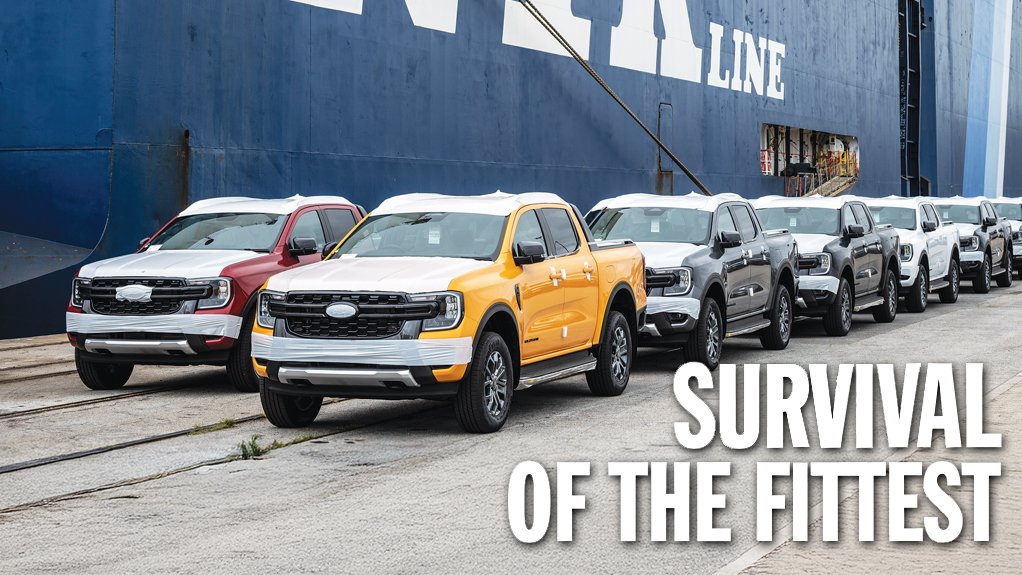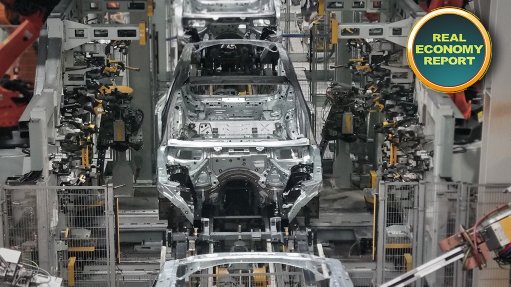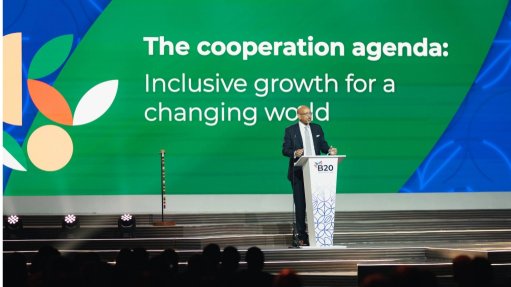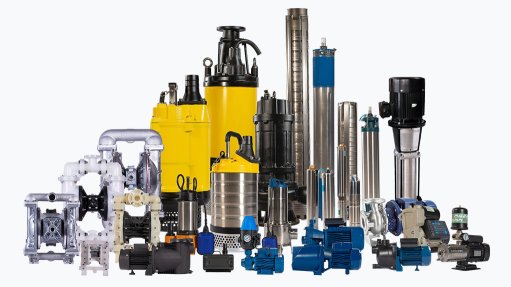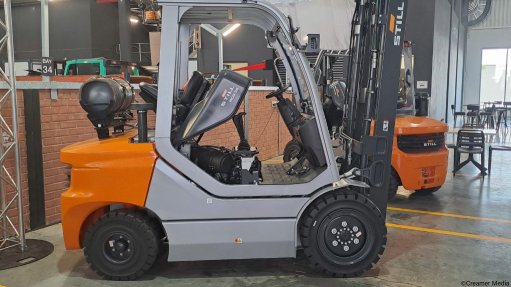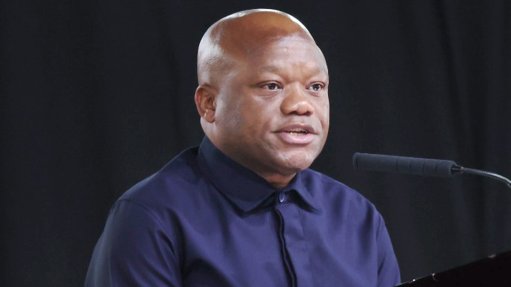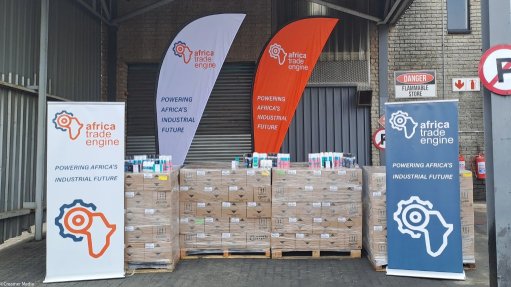SA auto industry facing volatile and uncertain global trading outlook
In its newly released Automotive Trade Manual 2025, naamsa | The Automotive Business Council describes 2024 as “a taxing year”.
The combined export value of vehicles and automotive components from South Africa dropped by R2-billion, or 0.7%, from the record R270.8-billion in 2023, to R268.8-billion in 2024.
Vehicle exports declined to 390 844 units, down from the record 399 809 units exported in 2023.
Automotive component exports were down by R3.5-billion, from R66.9-billion in 2023, to R63.4-billion in 2024.
Total vehicle production in 2024, at 599 753 units, was also well below 2023’s 632 362 units.
Despite last year’s declines, Naamsa notes that the domestic automotive sector remains the largest manufacturing sector in the country.
Vehicles and automotive component exports comprised 14.7% of total South African exports in 2024.
Also, a substantial 22.6% of value- addition within the domestic manufacturing output was derived from vehicle and automotive component manufacturing in 2024, while the broader automotive industry contributed 5.2% (3.2% manufacturing and 2% retail) to GDP.
The question, however, is what 2025 will look like for the domestic industry once the calendar turns to 2026.
Vehicle exports to end-May managed to inch ahead and were 1.4% ahead of the same period last year, following a slowdown in April and May on the back of some global fireworks and a local carmaker rejigging its Eastern Cape plant.
First-quarter domestic vehicle production decreased by 0.4% compared with the same period last year.
While the global economy had already started to show signs of strain towards the end of last year, Donald Trump’s January inauguration as US President created an entirely new level of uncertainty as he started to wield tariffs as an economic weapon, including against South Africa, with far- reaching consequences.
A rapidly rising Chinese automotive industry also looms increasingly larger on the horizon.
Scramble for Markets
naamsa chief trade and research officer Dr Norman Lamprecht says one potential threat to the South African automotive sector in exceeding 2024’s fairly healthy numbers is the fragmentation of the Government of National Unity, as was evident in its inability to agree on the 2025/26 Budget.
Such fragmentation impacts on businesses’ planning processes, as well as consumer and business confidence.
As new-car sales are inextricably linked to economic growth, any action that threatens the domestic economy also acts as a minus sum on car and truck sales and production, adds Lamprecht.
Another threat would be the global trade policy landscape remaining trapped in a period of heightened uncertainty.
Concerns about high tariffs, coupled with a weaker rand exchange rate, could potentially delay further interest rate cuts, which could dampen the demand for new vehicles in South Africa.
This uncertainty could also negatively affect demand for new vehicles in South Africa’s main export markets, as well as their affordability.
“Along with a tariff-led trade war, such as China retaliating against the US, geopolitical risk is anticipated to overtake inflation as the primary risk factor in 2025,” notes Lamprecht.
“The automotive sector, which relies heavily on stable supply chains for components and raw materials, may see volatility in both costs and availability, necessitating continuous strategic risk management and the diversification of supply sources.”
Lamprecht warns that high tariffs in the US will have a significant secondary impact around the world as South African exporters are likely to face increasing competition in their existing export strongholds from companies and countries desperately seeking new export markets.
What’s Happening in the US?
It is almost impossible to provide an answer on the current trade situation between the US and South Africa that will still hold true tomorrow.
The latest dispatch from the trade spat is that a new deal could potentially enable South Africa’s automakers to export 40 000 vehicles a year to the US tariff-free.
It seems government wants to persuade the US to lower its now-paused 31% tariff imposed on its exports, while it also wants to see a renewal of the African Growth and Opportunity Act (Agoa) prior to its September expiration date.
Under Agoa, now almost nullified under Trump’s new tariff regime, South Africa had been able to largely export cars and parts to the US duty-free.
Lamprecht says 40 000 units are only about 0.5% of the vehicles imported into the US last year, which totalled 7.68-million.
He says naamsa wants Agoa to continue, and it is clear why. When the programme was first put in place in 2001, exports to the US soared, peaking in 2011 at 68 951 units, with the US South Africa’s top exporting country for new vehicles from 2008 to 2013.
Trade disagreements around agricultural exports muddied the waters from 2013 onwards, coupled with vehicle manufacturers such as BMW and Mercedes-Benz now largely producing the same models in South Africa and the US.
This largely negated the need in recent years to export high volumes of made-in-SA models to the US, explains Lamprecht.
According to the 2025 Automotive Trade Manual, the US remained a significant export destination in 2024, however, as it placed at number three, with new-vehicle and component exports valued at R28.67-billion, up from 2023’s R27.94-billion.
New-vehicle exports alone were valued at R24.68-billion (up from R19.59-billion in 2023) and component exports at R4.4-billion, down sharply from 2023’s R7.8-billion.
The export numbers for this year, however, do not paint a healthy picture.
For the first three months of 2025, South African automotive exports to the US dropped by a third.
“The problem is that South Africa already exports vehicles to 109 countries – 155 when components are included – which means that finding new export markets is not that easy, especially as other countries are currently doing exactly the same thing,” says Lamprecht.
This means that any deal able to secure duty-free vehicle and parts export into the US would count as a big win for the local industry, even more so when considering that other exporters may still face steep tariffs.
“This could make vehicle exports from South Africa to the US more competitive compared with other exporters,” says Lamprecht.
“Previously, the duties saved under Agoa were 2.5%. With the saving now potentially 25%, this is likely to attract the attention of global vehicle manufacturers.”
The question may be what South Africa could offer the US in return. For one, 98% of the US’s chromium ore imports come from South Africa.
Don’t Fixate on US
While much of the noise currently emanates from the US, it is by no means South Africa’s main automotive export market.
This honour belongs to Europe and the UK, and the trade agreements that are in place with these blocs should not be taken for granted.
naamsa notes that South Africa has advantageous access to world markets through free trade agreements with major markets such as Europe and the UK, while it is also part of the Southern African Development Community free trade area, as well as the African Continental Free Trade Area.
Exports to the EU – the South African automotive industry’s top export region – increased to a record R156.7-billion in 2024, while exports to Africa, the second-largest export region, climbed to a record R48.1-billion.
Germany remains South Africa’s top country export destination, with an export value of R79.1-billion in 2024.
In total, 68.7% of light vehicles produced in South Africa were exported in 2024, with three out of every four vehicles leaving local shores going to Europe.
Germany has been in the top position since 2023, surpassing the UK, which dominated the rankings for nine consecutive years, followed by France, the US and Japan.
Volkswagen Group Africa, with its Polo model, was the country’s top export model for the fifth consecutive year in 2024.
naamsa warns, however, that the rapid transition towards electric vehicles (EVs) in South Africa’s major export regions is leading to a decrease in demand for internal combustion engine (ICE) vehicles – still the production mainstay of the local auto industry.
Legislation to ban sales of new ICE vehicles in the EU and the UK in favour of EVs is scheduled for 2035, with the legislation in some countries, such as Germany, coming into effect five years earlier – in 2030.
“For the domestic automotive industry to remain part of this global supply chain, it is imperative for South Africa to accelerate the implementation of EV-friendly policies or risk losing its edge,” Lamprecht reissues a long-standing warning.
Another, related challenge coming sharply to the fore is that every traditional automotive brand and vehicle producing region – Europe included – is experiencing increasing pressure from a sharply rising China and a raft of new advanced Asian brands coming to global markets cheaper than the known competitors, especially in terms of EVs.
Carmakers like Porsche and Nissan are feeling the heat, and Trump’s tariffs may be the final straw.
South Africa has, to date, not secured any manufacturing plant from a Chinese brand.
The domestic assembly landscape consists of European, US and Japanese brands – Isuzu, Toyota, Nissan (with this plant’s future in the balance), BMW, Mercedes-Benz, Volkswagen and Ford.
Government has scheduled a mid-term review of the South African Automotive Masterplan (SAAM) 2035, including its Automotive Production and Development Plan 2, for 2026, but local industry has requested this be brought forward.
“The SAAM 2035 objectives were developed in 2018, before the bans on fossil-fuelled ICE vehicles in the EU and UK were announced,” says Lamprecht.
“The world has also changed substantially since then, specifically in view of the disruptions caused by the global Covid-19 pandemic that set the global and domestic automotive industry back several years.”
It is not only vehicle exports that are under threat from the global shift to EVs, but also parts manufacturing, such as catalytic converter production.
A catalytic converter is fitted to a vehicle to reduce an ICE engine’s harmful emissions.
Total automotive component exports from South Africa decreased by R3.4-billion, or 5.2%, to R63.4-billion, in 2024, owing mainly to a decline in catalytic converter exports.
It is the second consecutive year of decline for component manufacturers.
Despite the drop, catalytic converters remained the top automotive component exported from South Africa last year, comprising 30.4% of total automotive component exports, followed by engine parts, tyres, and transmission shafts and cranks.
To put this into perspective, note, however, that the value of catalytic converters exported from South Africa reached R19.3-billion in 2024, down significantly from the R35-billion recorded in 2021.
SA’s Main Import Sources
South Africa is also a major importer of vehicles, with the threat that these numbers could expand rapidly as global carmakers seek to diversify export markets from the US.
Local carmakers will have to produce vehicles able to compete with these imports, or risk shedding market share.
Chinese car sales are not only rising rapidly in South Africa’s export markets, but also on home turf.
In fact, China today has the capacity to make nearly twice as many cars as its consumers need, reports The New York Times in a report dated November last year.
Also, owing to the major shift to EVs in China, carmakers have been left slashing prices on unwanted petrol cars and exporting them to markets worldwide.
This means that in 2023, most of the cars China sold abroad were traditional petrol- engine cars.
“China has more than 100 factories with a combined capacity to build close to 40-million ICE cars a year. That is more than twice as many as people in China want to buy, and [domestic] sales of these cars are dropping fast as EVs become more popular,” reports the US-based newspaper.
In 2024, the Chinese new-car market expanded to 31.44-million vehicles, while vehicle production in China increased to 31.3-million vehicles.
Chinese carmakers had a 65% share of the domestic market in 2024.
Car exports from China increased by nearly a fifth in 2024, with 5.9-million cars exported, including nearly a million battery- electric cars, this as the country overtook Japan to become the world’s largest vehicle exporter.
The largest Chinese car exporters in 2024 were Chery and SAIC, according to Best-Selling Cars.
In South Africa, the total imports of light vehicles (passenger cars and light commercial vehicles, or LCVs) increased by 2.6% from 296 767 units in 2023, to 304 355 units in 2024.
(Last year’s import number is 100 000 units more than in 2020, with vehicle exports from South Africa 120 000 units more in 2024 than in 2020.)
The top country of origin, in volume terms, for passenger cars and LCVs imported into South Africa last year was India, followed by China.
The Automotive Trade Manual 2025 shows that South Africa imported 87 036 vehicles from India in 2020, with this expanding to 173 742 units last year.
The number of vehicles from China has grown from 10 427 vehicles in 2020, to 52 067 units in 2024.
Both Chinese and Indian imports have gained favour with South African consumers as they produce more affordable cars. In India’s case, the country has also become a global site for small car production by carmakers around the world, such as Japanese brand Suzuki.
With South Africa’s economy still failing to gain traction, cash-strapped consumers continue to look towards smaller and cheaper cars – which currently largely favours imports over the mostly premium vehicles and bakkies made locally.
South Africa welcomed six different Chinese brands in 2024, on top of the three brands that launched in 2023.
Altogether, there were 14 different brands from China operating in the domestic new-vehicle market in 2024, with more to follow this year.
Article Enquiry
Email Article
Save Article
Feedback
To advertise email advertising@creamermedia.co.za or click here
Comments
Press Office
Announcements
What's On
Subscribe to improve your user experience...
Option 1 (equivalent of R125 a month):
Receive a weekly copy of Creamer Media's Engineering News & Mining Weekly magazine
(print copy for those in South Africa and e-magazine for those outside of South Africa)
Receive daily email newsletters
Access to full search results
Access archive of magazine back copies
Access to Projects in Progress
Access to ONE Research Report of your choice in PDF format
Option 2 (equivalent of R375 a month):
All benefits from Option 1
PLUS
Access to Creamer Media's Research Channel Africa for ALL Research Reports, in PDF format, on various industrial and mining sectors
including Electricity; Water; Energy Transition; Hydrogen; Roads, Rail and Ports; Coal; Gold; Platinum; Battery Metals; etc.
Already a subscriber?
Forgotten your password?
Receive weekly copy of Creamer Media's Engineering News & Mining Weekly magazine (print copy for those in South Africa and e-magazine for those outside of South Africa)
➕
Recieve daily email newsletters
➕
Access to full search results
➕
Access archive of magazine back copies
➕
Access to Projects in Progress
➕
Access to ONE Research Report of your choice in PDF format
RESEARCH CHANNEL AFRICA
R4500 (equivalent of R375 a month)
SUBSCRIBEAll benefits from Option 1
➕
Access to Creamer Media's Research Channel Africa for ALL Research Reports on various industrial and mining sectors, in PDF format, including on:
Electricity
➕
Water
➕
Energy Transition
➕
Hydrogen
➕
Roads, Rail and Ports
➕
Coal
➕
Gold
➕
Platinum
➕
Battery Metals
➕
etc.
Receive all benefits from Option 1 or Option 2 delivered to numerous people at your company
➕
Multiple User names and Passwords for simultaneous log-ins
➕
Intranet integration access to all in your organisation



